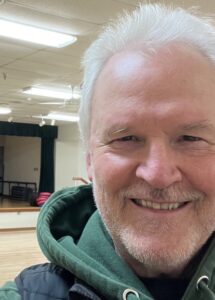Portland and Seattle have a storied rivalry throughout history, especially sports history.
Now it’s competition to find the cure for cancer. Let the games begin.
The Fred Hutchinson Cancer Research Center in Seattle has a super story out yesterday, huge story in the Seattle Times.
“The Hutch closes in on a cancer cure.”
Does it get any bigger?
Portland can’t compete with Seattle in the NFL. The NBA allowed the Super Sonics to slip slide away to Oklahoma. That audience got a taste of big time basket ball when New Orleans played there during Katrina.
It’s never been the same Sonics after they morphed into the Thunder.
Major League Baseball? It could happen, but right now the two cities butt heads in minor league hockey and Major League Soccer.
Add a cancer cure to mix? The Pacific Northwest could shock the world with a cancer cure from the two leading cancer research centers.
What’s the score so far?
Googling “Fred Hutchinson cancer cure” delivers the shocking headlines on how close they are to a cure. The news runs across multiple platforms, including boomerpdx.
Choosewashingtonstate.com says:
Trials are already underway at The Hutch and Bezos Family Immunotherapy Clinic at the Seattle Cancer Care Alliance for new treatments for several different forms of cancer, including blood cancers, lung cancer, breast cancer and melanoma.
Seattle may be known for its coffee culture and high-tech companies today, but its lasting legacy one day may be tied to finally curing cancer.
Googling Knight Cancer Institute cancer cure?
Nothing as dramatic as The Hutch, but a telling signal on opb.org:
Nike founder Phil Knight was making a speech at a fundraising gala for Oregon Health And Science University. He was off on a tangent about how the Oregon Ducks lost a national treasure when football coach Chip Kelly left for the NFL.
But then Knight pivoted, saying he didn’t want the same to happen to Brian Druker, the OHSU scientist who discovered the curative powers of the cancer drug Gleevec.
I’ll take a shot here and say The Hutch would love to add Dr. Druker to their team.
Druker doesn’t want anyone to think there is one silver bullet for cancer. Instead, he expects scientists to find many different cures because what we call “cancer” amounts to many different diseases.
He likens the search for answers to cancer to the efforts to cure infectious diseases.
“If you were diagnosed with pneumonia in the early 1900s, it was a death sentence,” Druker said. “And today you think, ‘Well what antibiotic do I need?’”
The story continues with:
He says infectious diseases were cured in many different ways. Towns introduced sewage treatment plants. They built plants to provide clean water. Milk was pasteurized to kill bacteria. Food was refrigerated.
“And then we introduced vaccines, polio vaccine, we’ve eradicated smallpox. And for cancer, we’re going to take that same approach,” Druker said.
He uses the example of leukemia, a cancer of the white blood cells. It isn’t just one disease, but a dozen or more.
Druker’s drug, Gleevec, increased the survival rate for one type of leukemia from 30 percent to 90 percent. It’s been called a miracle drug and was one of the first personalized or precision therapies.
The work of Druker and his Gleevec team showed that if scientists could understand the biology of a disease, then they could learn how to treat it.
“If you understand what’s driving the growth of a cancer, you can target that specifically,” he said. “That leads you to better responses, fewer side effects.”
Gleevec isn’t poisonous like chemotherapy. Instead, it unlocks a cancer cell’s defenses so chemotherapy drugs can penetrate to kill it. Gleevec also unleashed a whole new area for research.
Any cancer research moving toward treatments that aren’t “poisonous like chemotherapy” is the right direction. Ask anyone who has come off chemo and radiation, hit the ‘nadir’, and wondered if there’s any way to bounce back. I’ll do a quick interview for the record:
Boomerpdx: Did you feel like death warmed over after cancer treatment ended?
Me: Warmed over, run over, fell over, down and out, flopped and dropped, road kill. What was the question?
Boomerpdx: Did chemotherapy feel like poison?
Me: It looked like poison.
Boomerpdx: How so?
Me: Nurses administered the first dose wearing what looked like Haz-mat suits. It came in a bag with a special shield around it and looked like black crude oil oozing into the hose.
Boomerpdx: The hose?
Me: Like gassing up at the gas station, you pop the gas cap. When you get gassed up with chemo the cap is the port surgically installed in your chest.
Boomerpdx: Thank you.
Me: I’ve got more.
Boomerpdx: Feeling dizzy. I think we have enough.
Me: Let me tell you the first port access.
Boomerpdx (breathing in a bag): I’m listening. (Huff, huff.)
Me: There I was in a taxi cab with more tubes running out of my chest than Iron Man. Look at this scar.
Boomerpdx: (Errrp, gaaaack,) Okay, we’re done.



